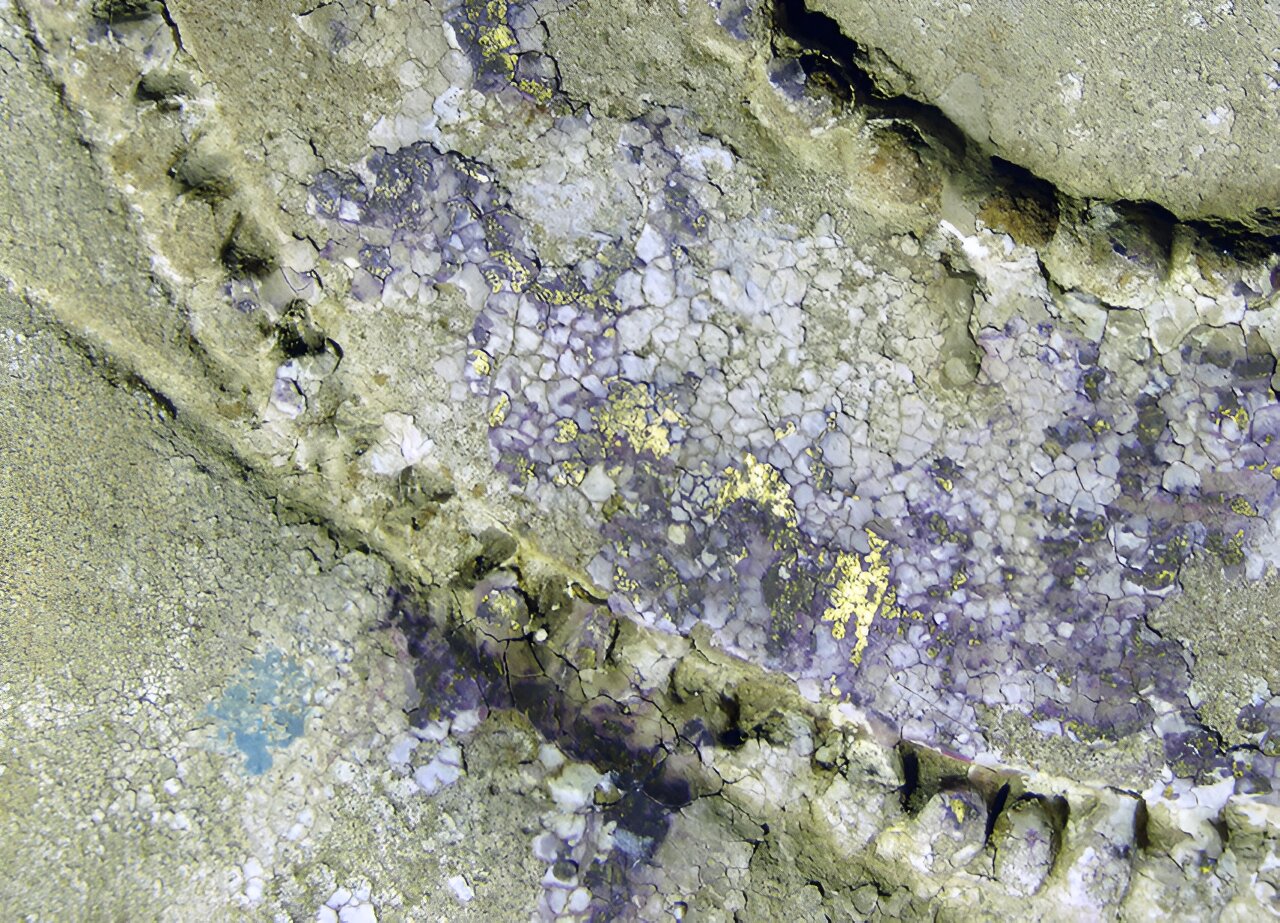Egyptian temples were architectural marvels, renowned not only for their grand scale but also for their vibrant colors and gilded decorations. Among these temples, the temple of Edfu, dedicated to the falcon god Horus, stands out as one of the most well-preserved and impressive examples of ancient Egyptian craftsmanship. Recent research has revealed fascinating new details about the decorative techniques used in these temples, including the widespread use of gold leaf and colorful paints.
Gold and Color in Ancient Egyptian Temples
Ancient Egyptian temples were not the monochromatic stone structures we often envision today. Instead, they were adorned with bright colors and gleaming gold. From the earliest Pharaonic Period, columns, gates, and obelisks were often covered in gold, a symbol of divine power and immortality. Textual sources from ancient Egypt indicate that many buildings were gilded, and though most of these gilded surfaces have been lost over time, researchers have uncovered traces of the metal foils that once covered them. In many cases, thicker metal foils made of gilded copper were used, leaving behind only small holes in the walls where the foils were once attached.
While these thicker gilded metal overlays are well-documented, the use of thin gold leaf in temple decorations has been much harder to study due to its fragility. However, recent discoveries at the temple of Edfu have shed new light on this practice. Researchers have found particles of gold leaf on the higher wall areas of the temple’s barque sanctuary, providing direct evidence of the once-lavish gilding that adorned this sacred space.
Research at the Temple of Edfu
In collaboration with the Egyptian Ministry of Tourism and Antiquities, a team from Julius-Maximilians-Universität (JMU) Würzburg has been conducting extensive research into the decorative practices of the temple of Edfu. The temple, dedicated to Horus, the falcon-headed god of the sky, is an extraordinary example of ancient Egyptian religious architecture. The researchers, led by Dr. Victoria Altmann-Wendling, have been focusing on the colorful paintwork that once covered the temple’s stone reliefs.
Under the direction of Ahmed Abdel Naby, an Egyptian team of conservators has been working to clean and preserve the temple’s reliefs. Over the years, the reliefs had accumulated dust, bird droppings, soot, and other debris. Once these layers were carefully removed, the team discovered traces of the original paint that had once covered the entire reliefs. This discovery is significant because most ancient Egyptian temples have lost their paint, and only a few interior areas retain any remnants of their original colors.
According to Dr. Altmann-Wendling, the gilding of the figures served not only to immortalize and deify them but also to enhance the mystical atmosphere of the temple. The sunlight reflecting off the gold would have created a dazzling effect, adding to the sense of awe and reverence within the sacred space.
Correcting Hieroglyphs with Paint
In addition to uncovering the colorful paintwork, the researchers also found evidence that the ancient Egyptian craftsmen used paint to correct mistakes in the carved hieroglyphs. While the hieroglyphs were carefully chiseled into the stone, some errors remained. The craftsmen used color to make these corrections, effectively performing a kind of “quality management” to ensure that the inscriptions were accurate.
Professor Martin A. Stadler, the director of the Horus Beḥedety Project at JMU, highlighted this discovery as an example of the meticulous care that went into the creation of the temple’s decorations. The combination of painted corrections and gilded figures underscores the high level of craftsmanship and attention to detail that characterized ancient Egyptian temple construction.
Graffiti and Inscriptions
Another intriguing discovery made by the research team was the presence of graffiti, known as dipinti, painted in ink on the temple walls. These inscriptions, written in the Demotic script, were created by the priests who served in the temple. The graffiti provides a rare glimpse into the daily lives and religious practices of the priests, offering new insights into their beliefs and cult activities.
Most of these inscriptions were found in outer temple areas or near doorways, rather than in the inner sanctuaries. However, the presence of these personal writings in such a sacred space reveals the close relationship the priests had with the temple and the gods they worshiped. The inscriptions, referred to as proskynemata in academic terms, provide valuable information about the “spatial biography” of the temple, illustrating how different areas were used and how religious practices evolved over time.
The Temple of Edfu: A Monument to Horus
The temple of Edfu is not only one of the best-preserved temples in Egypt, but also one of the most important from an architectural and religious perspective. Located on the west bank of the Nile, the temple was built over a period of nearly two centuries, from 237 to 57 BC, during the reigns of Kings Ptolemy III through XII. The temple measures 137 meters in length and 76 meters in width, with towering walls that range in height from 15 to 35 meters.
What makes the temple of Edfu especially remarkable is the sheer quantity of inscriptions and reliefs that cover its walls. These texts and images, many of which date back to the third millennium BC, provide a wealth of information about ancient Egyptian religious beliefs, rituals, and myths. The temple is dedicated to Horus, one of the most important deities in the Egyptian pantheon, and many of the reliefs depict scenes of Horus battling his enemies and protecting the pharaoh.
